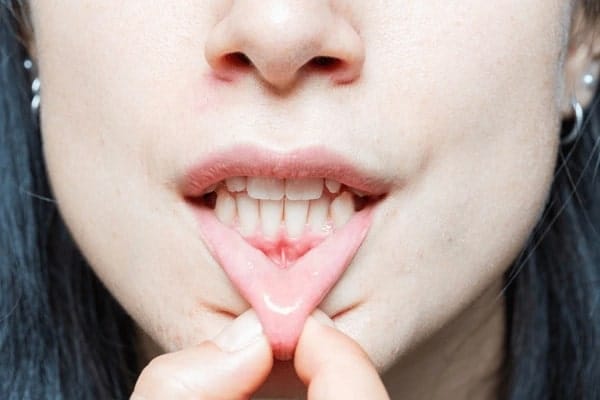Tooth extractions are a common dental procedure, often necessary due to decay, infection, crowding, or trauma. While the procedure itself is performed under local or general anaesthesia, it is normal to experience some level of discomfort during the healing phase. Managing this discomfort in a safe and effective way is essential to support recovery and prevent complications. This guide outlines best practices for post-extraction care, while keeping patient safety and compliance at the forefront.
What Happens After a Tooth Is Removed?
After an extraction, the body begins the natural healing process. A blood clot forms in the socket where the tooth was, acting as a protective barrier for the bone and nerves beneath. This clot is crucial for healing and must remain intact. Dislodging it too early can lead to a painful condition known as dry socket.
The gum tissue gradually regenerates, and over time, bone remodelling takes place beneath the surface. Mild to moderate discomfort, swelling, and limited mouth opening can be expected in the first few days following extraction. Understanding how to care for the area post-surgery is vital to minimising pain and supporting effective healing.
What Are the Most Effective Pain-Relief Strategies Post-Extraction?
Pain management after tooth removal should be approached with a balanced and evidence-based strategy. The following table outlines widely accepted techniques for managing discomfort while supporting the healing process:
| Strategy | Purpose | Considerations |
| Cold compress (20 min intervals) | Reduce swelling and discomfort | Avoid placing ice directly on the skin |
| Over-the-counter pain relief | Manage moderate pain | Only use as directed by a healthcare provider |
| Saltwater rinses (after 24 hrs) | Promote healing and reduce bacteria | Must be gentle; too early can dislodge clot |
| Soft food diet | Prevent site irritation | Avoid hot, spicy, or hard foods |
| Proper rest | Supports the body’s natural healing | Avoid strenuous exercise for 24–48 hours |
| Elevated sleeping position | Helps reduce overnight swelling | Use extra pillows if needed |
What Should You Do Immediately After the Extraction?
- Bite down gently on the gauze provided by your nearest dentist to stop bleeding.
- Apply a cold compress to the outside of your face for the first 24 hours.
- Limit talking and avoid disturbing the site.
- Rest with your head slightly elevated.
- Follow all instructions provided by your dental team.
What Should You Avoid During Recovery?
Taking precautions is just as important as following post-operative advice. Certain actions can disrupt healing and increase the likelihood of complications:
- Avoid smoking or using tobacco products for at least 72 hours.
- Refrain from drinking through straws.
- Do not rinse your mouth vigorously in the first 24 hours.
- Avoid hard, crunchy, or spicy foods.
- Limit physical activity and exercise in the first two days.
Why Is It Important to Recognise the Signs of Complications?
Even when instructions are followed, some individuals may experience issues that require professional review. If you experience any of the following symptoms, contact your dentist:
- Severe or increasing pain that doesn’t subside
- Swelling that worsens rather than improves
- Fever, chills, or general unwellness
- Persistent or heavy bleeding
- Foul taste or odour in the mouth
Early identification and professional management of complications are essential to avoid delays in healing.
How Does Diet Influence the Healing Process?
Nutrition plays a crucial role in tissue repair and inflammation control. In the days following surgery, patients are advised to eat soft, cool, and non-acidic foods. Consider:
- Mashed potatoes
- Scrambled eggs
- Smoothies (without straws)
- Soft-cooked pasta
- Soups (lukewarm, not hot)
Hydration is equally important. Water should be the primary fluid, and patients should avoid alcohol and carbonated beverages until fully healed.
What Oral Hygiene Habits Help Without Hindering Recovery?
Maintaining cleanliness in the mouth is vital but should be approached cautiously. Brushing should continue, avoiding the surgical site for the first few days. After 24 hours, gentle saltwater rinses may be introduced to support cleanliness. Do not use commercial mouthwashes unless recommended by your dentist.
When Should You Return to Normal Activity?
Most patients can resume light activity within 24 to 48 hours. However, avoid bending, heavy lifting, or vigorous exercise during the first few days to prevent increased blood flow and potential disruption of the clot. Your dentist may provide a more specific timeline based on the complexity of your procedure.
How Can Palm Beach Dental Support You During Recovery?
At Palm Beach Dental, we prioritise patient comfort and education. Our experienced dental team offers tailored care plans to support you through every stage of your recovery. From gentle extractions to comprehensive post-operative guidance, our focus is on helping you understand what to expect and how to respond. We provide detailed instructions after each procedure and remain available to answer questions or review any concerns. Our approach is built on professionalism, trust, and commitment to ongoing patient care.
Whether you’re preparing for a tooth extraction or are already in the healing stage, Palm Beach Dental is here to assist. With a focus on long-term oral health, we empower you with the tools and information necessary for a safe and smooth recovery.
Important FAQs
Q1: How long does the pain last after a tooth extraction?
Mild discomfort is normal for a few days after extraction. Pain typically peaks within the first 24 to 48 hours and gradually subsides. If pain worsens or persists beyond 5 days, contact your dentist.
Q2: Can I brush my teeth after an extraction?
Yes, but carefully. You should avoid brushing near the extraction site for the first few days. Resume gentle brushing elsewhere in the mouth immediately, and introduce saltwater rinses after 24 hours.
Q3: What are signs of dry socket?
Symptoms may include intense throbbing pain, bad breath, and visible loss of the blood clot in the socket. This condition should be assessed and managed by a dentist promptly.
Q4: Is it safe to use pain medication after a tooth removal?
Over-the-counter medications can help manage discomfort when used as directed. Always follow the instructions on the packaging and consult your dentist for personalised recommendations.
Q5: What should I avoid eating after tooth extraction?
Avoid hot, crunchy, spicy, or acidic foods, as they can irritate the area. Stick to soft, cool meals like mashed potatoes or smoothies (without using a straw).
Q6: How do I know if my extraction site is healing properly?
Signs of proper healing include reduced swelling, less pain day by day, and the development of healthy tissue in the socket. If anything seems unusual, seek professional advice.
References
- Australian Dental Association. Post-operative Care After Tooth Extraction. Available at: https://www.teeth.org.au/tooth-removal
- Better Health Channel. Tooth Extraction – Recovery and Aftercare. Available at: https://www.betterhealth.vic.gov.au/health/conditionsandtreatments/tooth-extraction
Disclaimer
All dental procedures involve potential risks and benefits. The information provided in this blog is general in nature and should not be taken as medical advice. We recommend that you seek guidance from a suitably qualified health professional before making decisions about your oral health. Where appropriate, you may also wish to consider obtaining a second opinion.
Any images or videos featured are shared with the informed consent of our patients and are intended for educational purposes only. They are not a guarantee of results, as every patient is unique. Treatment outcomes — including recovery, potential complications, and effectiveness — can vary from person to person.



